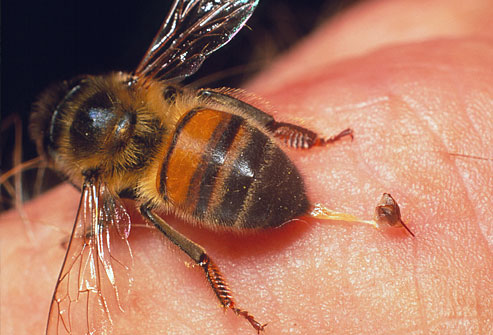Wasp sting: What to do and how to treat
The insect bites are one of the most common complaints when temperature rises, and among them, the wasp sting. It is not always easy to escape its sting, especially if we take into account that it is its way of defending themselves when believe that it can be attacked. What are the symptoms of wasp sting? What can we do to relieve the discomfort? Do not forget that the insect bites should not be underestimated, especially when a person is allergic.
Table of Contents
What to do?
In general, wasps do not leave a stinger in the body of his victim and, therefore, can sting multiple times same person. The first is to try to leave the area of the wasp to a safe place and immediately after the bite, make sure that the sting has not been on the skin. If so, then remove it with care, using sterile forceps. Then wash the area with cold water and then proceed to disinfect the wound.
Symptoms
Symptoms of wasp sting mainly include swelling and redness. People who do not suffer from allergies will notice some symptoms of short duration, as acute pain but temporary, redness, itching or burning in the affected area. Around the area of the bite may appear a swelling and a white point, where the stinger pierced the skin. However, the wasp sting may also manifest with severe allergic reactions and should go immediately to the emergency room to prevent anaphylactic shock.
The most common symptoms of anaphylactic shock are lightheadedness, shortness of breath, dizziness, nausea, vomiting, cramps, diarrhea, drop in blood pressure, swelling of the face, lips and throat or appearance of hives.
Remedies
Before enter the remedies for wasp sting remember that it is important to consult the doctor to assess the need to pursue a possible drug therapy, based on antihistamines or corticosteroids to reduce discomfort. In case of allergy, you should take immediately EpiPen, essential in the first-aid kit of everyone at risk of allergic reaction if stung by a wasp or bee. Then go immediately to the emergency room.
When symptoms are mild, we can turn to natural remedies. Among them, the soda is very useful. For example, mixing a teaspoon with a little water and spreading the mixture on the bite for a few minutes, then rinse with cold water. Another remedy is to apply an ice cube in the area of the bite for 20 minutes to relieve pain and reduce swelling.
On the skin affected by the wasp sting can also be applied basil and a slice of potato, rich in beneficial properties that help relieve discomfort. Finally, aloe vera and lemon balm have good natural remedies. In the case of aloe, you can remove the gel directly from the plant leaves. As for lemon balm, you can apply two leaves in the area to be treated.
